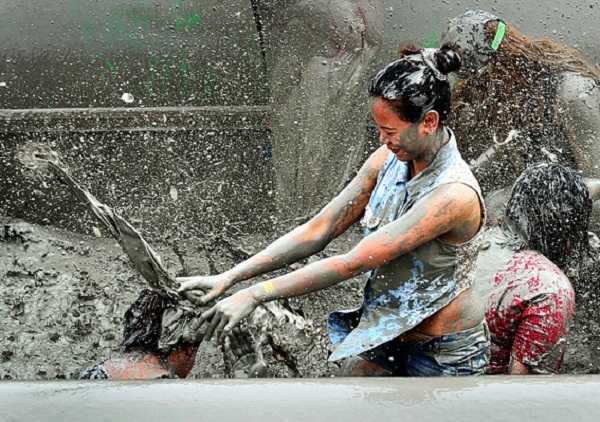
Mud is wet soil that is formed when soils, salts, and various breakdown products of marine life undergo long periods of geological, chemical, and microbial disintegration. Vitamin-enriched mud is renowned for its ability to absorb and dilute harmful toxins from the body. Owing to its myriad of health benefits, mud has long been a popular ingredient in skin care, as well as in treatments for numerous ailments.
One can find distinct types of mud in different countries: “Dead Sea salt” in Israel, “glacial clay” in Canada, “Baikal mud” in Russia, “Clare mud” in California, and “volcano mud” in New Zealand. It was in 1996 that Korea first launched its own domestic brand of mud ingredient: “Boryeong mud”.
Boryeong mud can be collected from the coast of the Yellow Sea, three hours away from Seoul. Mud from the Yellow Sea is known to contain active ingredients that prevent cell-aging, as well as mineral substances that augment skin vitality and elasticity. Applying a layer of this mud on your face can help remove dead skin layers and promote skin regeneration. When applied to the surface of the stomach, it can have natural detoxifying effects, while simultaneously helping with digestion, metabolism, and blood circulation. The ingredient can also be remarkably effective in trauma-therapy.
The Boryeong Mud Festival is annually held in efforts to raise awareness of the region’s mud and to strengthen its reputation. Every summer, this event attracts several million festival-goers, who can relish the experience of covering themselves with mud and frolicking in a mud pool. The Boryeong Mud Festival has flourished as one of the best festivals in Korea, with great attendance of foreigners, making itself the global festival of today. Unfortunately, as the COVID-19 pandemic wiped out festivals globally, the offline mud festival was postponed or held fully online over the past two years.
Nevertheless, the Boryeong municipal government is planning for a great upturn for the next festival, by collaborating with the North Chungcheong provincial government. Next year’s festival will be organized as an international event that features not only mud festivals but also interactive exhibitions, international forums, business conventions, and B2B programs. Furthermore, the festival’s theme will be widened to encompass the marine industry in addition to the mud industry. It is expected that many stakeholders in the marine industry will be able to share their ideas and businesses at this event.
At present, the festival is pencilled in for July 15 to August 16, 2022. All tickets can be purchased through its website. Festival-goers are already in great hope that this festival will be exciting and prosperous.
Kayla Hong
Asia Journal



